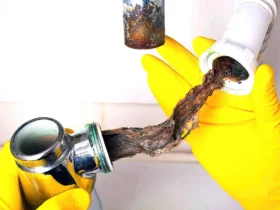Insects are intelligent. They locate the tiniest holes and make them entry points. Among the least taken access routes? Air bricks. Ventilation is necessary through air bricks. However, they also allow intruders such as mice, spiders, and wasps. The answer is relatively easy if you desire a well-ventilated yet pest-free home. Pest-proof by fitting an air brick cover. Here’s what you need to know.
What Are Air Bricks And Why Do Pests Love Them?
Air bricks allow airflow under floorboards or within cavity walls. They help reduce moisture and stop mould from building up. But the design that allows air to pass through also gives pests a way in.
Mice can squeeze through tiny gaps. Wasps can build nests inside warm, dry cavities. Spiders find sheltered spaces to spin webs. Once inside, they are hard to get rid of. That’s why blocking access without blocking airflow is key.
The Role Of An Air Brick Cover
An air brick cover for pest proofing acts as a barrier. It allows air to move but keeps insects and rodents out. Most covers are made from stainless steel or galvanised mesh. These materials are weather-resistant and hard for pests to chew or bend. Fitting one over each air brick is quick but makes a significant impact. You stop infestations before they start. No chemicals. No traps. Just smart prevention.
Signs You Need One
You don’t always see pests entering, but you might spot signs of their presence:
- Droppings near vents or along skirting boards
- Scratching noises at night
- Wasps flying in and out of the air bricks
- Cold draughts that feel stronger than usual
- If you notice any of these, it’s time to act.
What To Look For In A Good Air Brick Cover
Not all covers are the same. Choose one that fits your brick size exactly. A poor fit leaves gaps. A tight fit stops airflow. Look for rust-proof materials. Outdoor bricks face rain, wind, and temperature changes. You need a cover that can handle that without corroding or warping.
Mesh size matters too. It should be fine enough to block insects like wasps and spiders, but open enough to allow ventilation. Some covers are self-adhesive. Others screw in place. Both work well, depending on your wall type and access.
Boosting Your Defence With Natural Wasp Repellent
If wasps are a recurring problem, a good air brick cover is the first step. But you can also add natural wasp repellent options around entry points. Clove, peppermint, and citronella oils are known to keep wasps away. Dab a few drops near windows and vents, or use them in a spray bottle with water. This adds an extra layer of defence, especially in warmer months when wasp activity increases.
One Small Fix, Big Peace Of Mind
A single uncovered air brick might not seem like much. But for pests, it is an open door. Installing an air brick cover for pest proofing is quick, affordable, and highly effective. It protects your home while keeping your ventilation intact. No disruption. No mess. Just a smarter, safer home.
Add natural wasp repellent where needed. Monitor entry points. And rest easy knowing your house is one step ahead. Simple changes make a big difference. Start with the basics. Start with your bricks.






